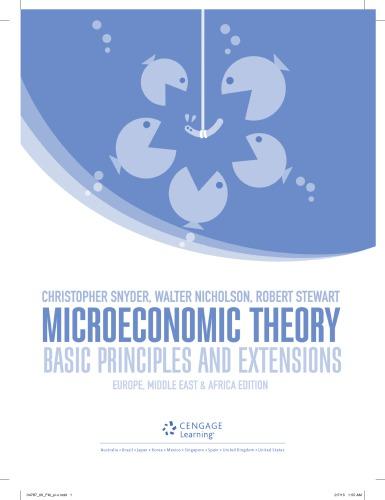10.8 Some envelope results Youngs theorem can be used in combination with the envelope results to derive...
Question:
10.8 Some envelope results Young’s theorem can be used in combination with the envelope results to derive some useful results.
a.
Show that ∂l (P, v, w) /∂v = ∂k (P, v, w) /∂w using substitution and output effects.
b.
c.
d.
Use the result from part
(a) to show how a unit tax on labour would be expected to affect capital input.
Show that ∂q / ∂w = −∂l / ∂P. Interpret this result.
Use the result from part
(c) to discuss how a unit tax on labour input would affect quantity supplied.
c.
d.
Use the result from part
(a) to argue that ∂q*/∂P ≥
∂qs/∂P. This establishes Le Châtelier’s Principle for supply: Long-run supply responses are larger than (constrained) short-run supply responses.
Using similar methods as in parts
(a) and (b), prove that Le Châtelier’s Principle applies to the effect of the wage on labour demand. That is, starting from the deinitional relation l *(P, v, w) = l s(P, w, k *
(P, v, w)), show that ∂l */∂w ≤ ∂l s/∂w, implying that long-run labour demand falls more when wage goes up than short-run labour demand (note that both of these derivatives are negative).
Develop your own analysis of the difference between the short and long-run responses of the irm’s cost function [C (v, w, q)] to a change in the wage (w).
Step by Step Answer:

Microeconomic Theory Basic Principles And Extensions
ISBN: 9781473729483
1st Edition
Authors: Christopher M Snyder, Walter Nicholson, Robert B Stewart






